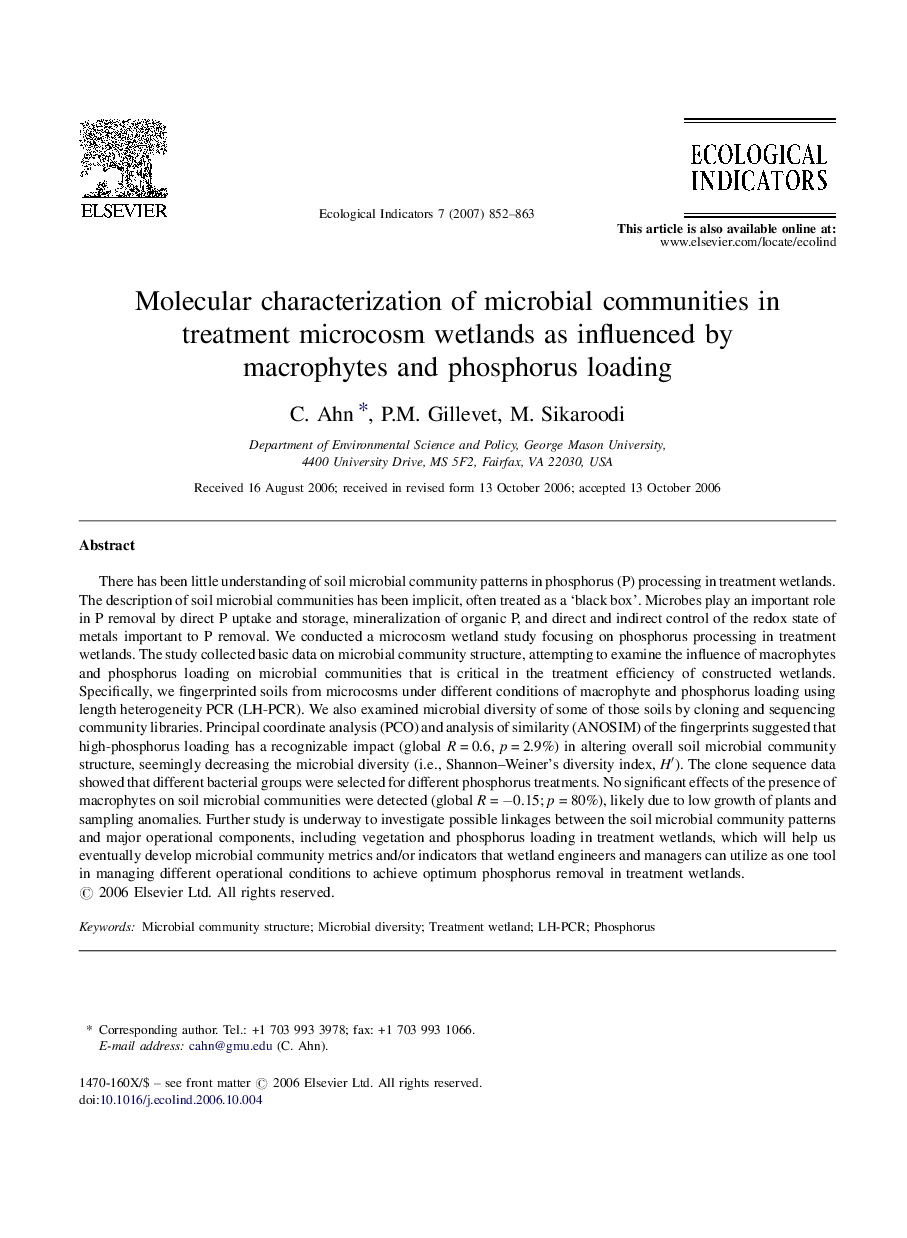| Article ID | Journal | Published Year | Pages | File Type |
|---|---|---|---|---|
| 4374660 | Ecological Indicators | 2007 | 12 Pages |
Abstract
There has been little understanding of soil microbial community patterns in phosphorus (P) processing in treatment wetlands. The description of soil microbial communities has been implicit, often treated as a 'black box'. Microbes play an important role in P removal by direct P uptake and storage, mineralization of organic P, and direct and indirect control of the redox state of metals important to P removal. We conducted a microcosm wetland study focusing on phosphorus processing in treatment wetlands. The study collected basic data on microbial community structure, attempting to examine the influence of macrophytes and phosphorus loading on microbial communities that is critical in the treatment efficiency of constructed wetlands. Specifically, we fingerprinted soils from microcosms under different conditions of macrophyte and phosphorus loading using length heterogeneity PCR (LH-PCR). We also examined microbial diversity of some of those soils by cloning and sequencing community libraries. Principal coordinate analysis (PCO) and analysis of similarity (ANOSIM) of the fingerprints suggested that high-phosphorus loading has a recognizable impact (global R = 0.6, p = 2.9%) in altering overall soil microbial community structure, seemingly decreasing the microbial diversity (i.e., Shannon-Weiner's diversity index, Hâ²). The clone sequence data showed that different bacterial groups were selected for different phosphorus treatments. No significant effects of the presence of macrophytes on soil microbial communities were detected (global R = â0.15; p = 80%), likely due to low growth of plants and sampling anomalies. Further study is underway to investigate possible linkages between the soil microbial community patterns and major operational components, including vegetation and phosphorus loading in treatment wetlands, which will help us eventually develop microbial community metrics and/or indicators that wetland engineers and managers can utilize as one tool in managing different operational conditions to achieve optimum phosphorus removal in treatment wetlands.
Related Topics
Life Sciences
Agricultural and Biological Sciences
Ecology, Evolution, Behavior and Systematics
Authors
C. Ahn, P.M. Gillevet, M. Sikaroodi,
